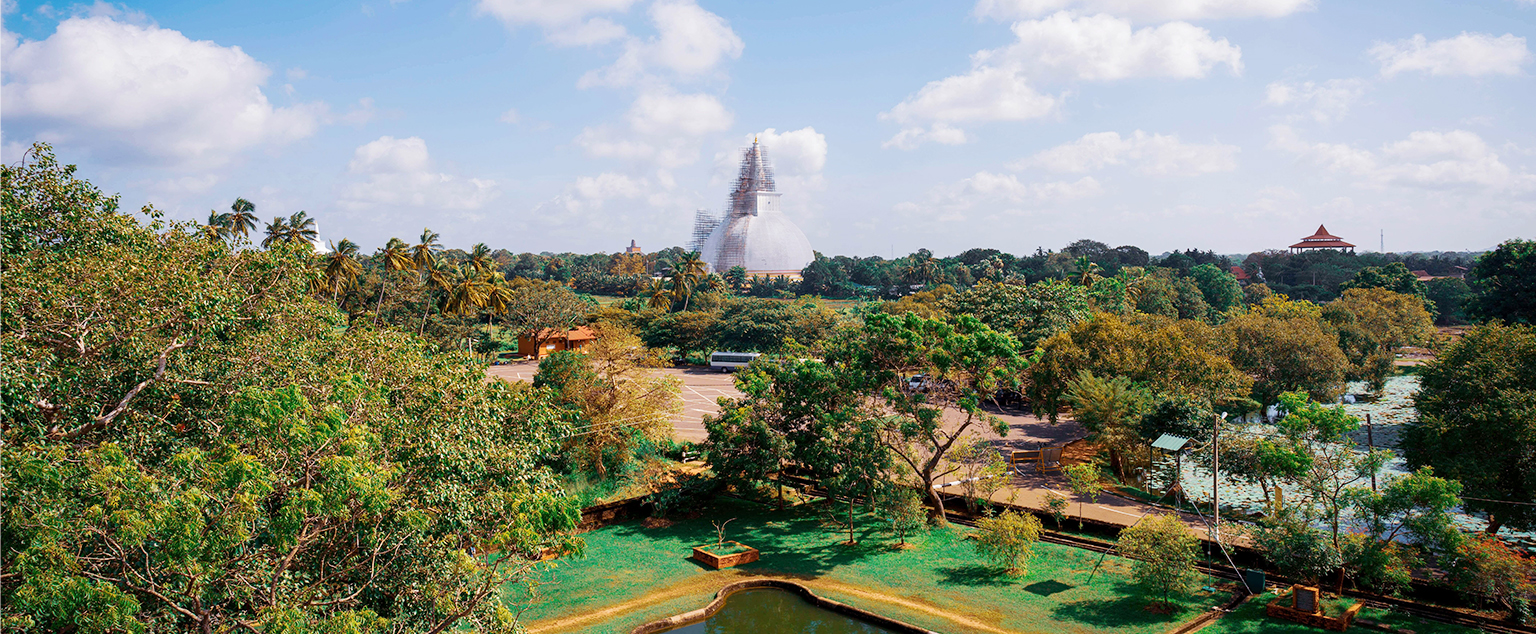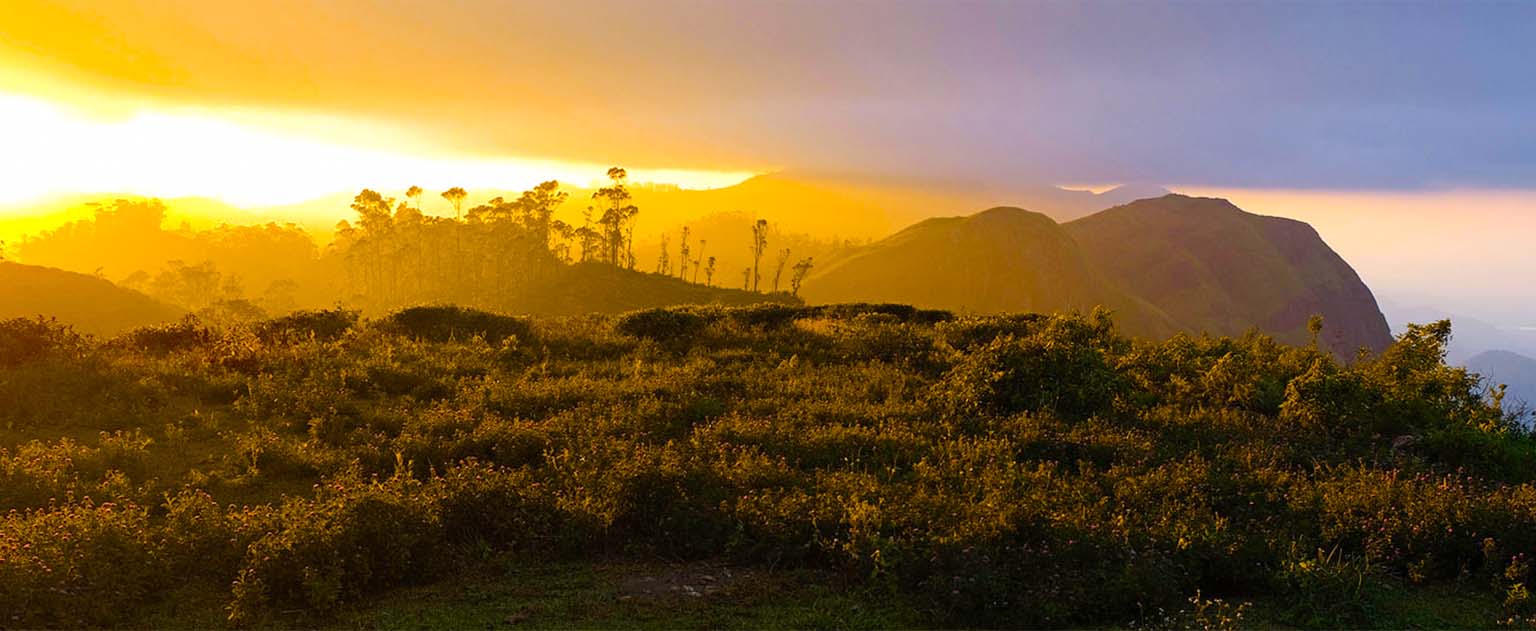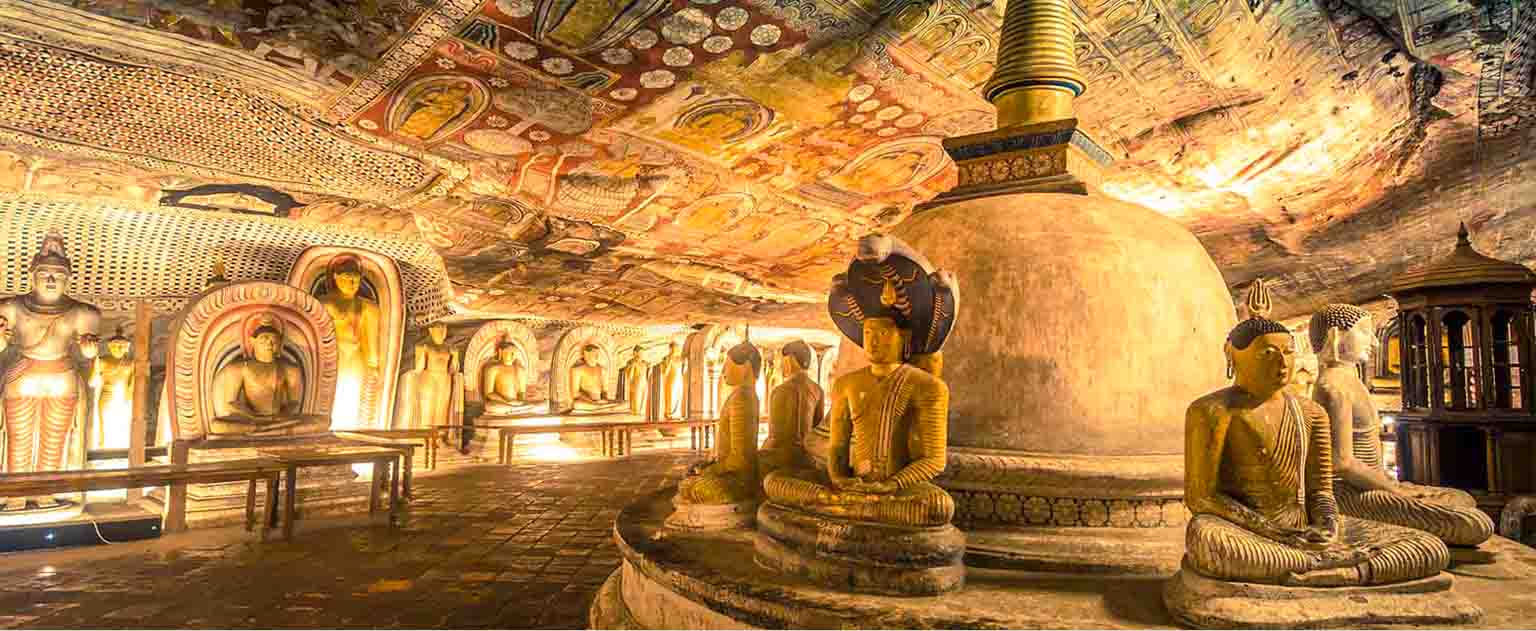Anuradhapura
Ancient City of Anuradhapura
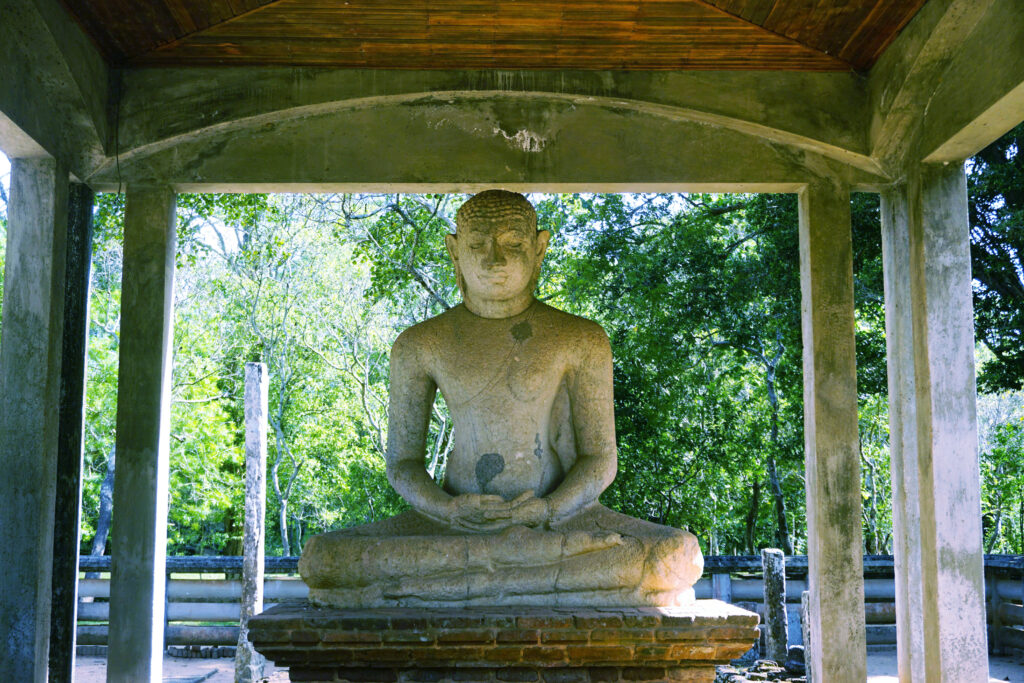
Anuradhapura holds a significant place in the history and cultural heritage of Sri Lanka, with evidence of human settlement dating back over three millennia. Mahāvansa, a historical chronicle of Sri Lanka, attributes the city’s founding to 437 BCE, although the site had been inhabited long before that.
Anuradhapura served as the capital of several early kingdoms in Sri Lanka, including the Sinhala Kingdom of Rajarata. It was a political center and hub of Theravada Buddhism, with numerous ancient temples and monasteries dotting its landscape. The Jaya Sri Maha Bodhi believed to be a descendant of the original Bodhi tree under which the Buddha attained enlightenment, stands as a testament to the city’s religious significance.
Despite facing destruction during the Chola invasion in the 10th century CE, Anuradhapura’s legacy endured. Efforts to revive the city began in the 19th century under British colonial rule. Today, Anuradhapura is a UNESCO World Heritage Site, attracting tourists and scholars with its well-preserved ruins and rich cultural heritage.
Pearlbay Travels invites you to embark on a transformative journey to Anuradhapura, where the echoes of ancient civilization resound amidst the timeless beauty of its archaeological wonders. Immerse yourself in the historical, architectural, cultural, and religious significance of this sacred city, and experience the profound sense of awe and reverence that has captivated visitors for centuries.
The contemporary city serves as a road junction and railway hub, the headquarters for Sri Lanka’s archaeological survey. Tourism plays a significant role in its economy, highlighting the enduring allure of Anuradhapura’s ancient marvels. For travelers seeking to explore Anuradhapura, accessing the destination has never been easier, thanks to a range of transport options available, including buses and train services, which are integral parts of Sri Lanka’s public transport network. The Sri Lankan government has further streamlined the travel experience by introducing online bus seat booking, allowing tourists to reserve their seats conveniently through the official website https://sltb.eseat.lk. Additionally, train travel to Anuradhapura Puja City is made accessible with the option to reserve train seats online via https://eservices.railway.gov.lk.
Sri Maha Bodhi Tree
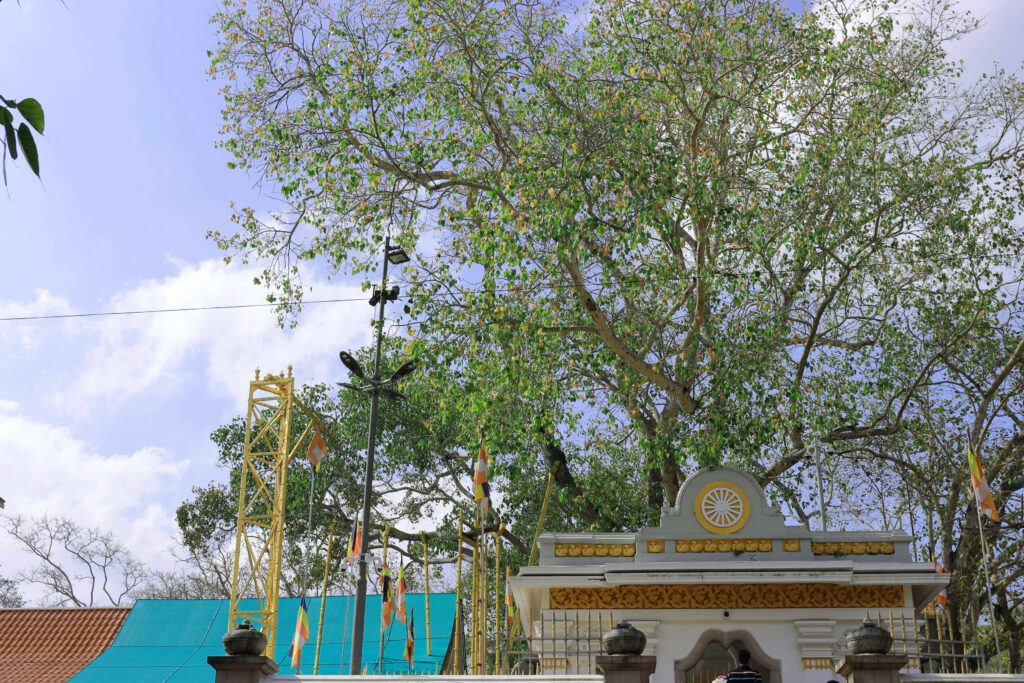
The Sri Maha Bodhi Tree, located within the sacred grounds of Anuradhapura, is one of the most revered and historically significant trees in the world. Esteemed as the oldest historically authenticated tree, it has thrived for over two millennia, standing as a living testament to the rich spiritual heritage of Sri Lanka. This sacred fig tree (Ficus religiosa) is believed to have grown from a cutting of the original Bodhi Tree in Bodh Gaya, India, under which the Buddha attained enlightenment. According to historical records, the cutting was brought to Sri Lanka in the 3rd century BCE by Sangamitta Thera, the daughter of Emperor Ashoka, a key figure in the propagation of Buddhism. The tree was planted in 288 BCE by King Devanampiya Tissa, marking the beginning of an enduring spiritual legacy that has made the Sri Maha Bodhi Tree a pivotal symbol of Buddhist faith and devotion.
The historical significance of the Sri Maha Bodhi Tree extends beyond its age, as it played a crucial role in the establishment and spread of Buddhism in Sri Lanka. The tree has witnessed the rise and fall of kingdoms, the transformation of the island’s cultural landscape, and the unwavering devotion of countless pilgrims who have journeyed to Anuradhapura to pay their respects. Its presence has inspired the construction of numerous monasteries, stupas, and religious edifices in the vicinity, cementing Anuradhapura’s status as a major center of Buddhist learning and worship. The tree’s enduring survival through centuries of political upheavals and natural calamities underscores its resilience and the deep-rooted veneration it commands among the faithful.
Culturally, the Sri Maha Bodhi Tree is a cornerstone of Sri Lankan identity and heritage. It symbolizes the profound connection between the island’s people and their spiritual traditions, serving as a beacon of continuity and stability. The rituals and ceremonies conducted around the tree, such as the annual pilgrimage and various offerings, reflect the intricate tapestry of cultural practices that have evolved around this sacred site. The tree’s presence in Anuradhapura also highlights the city’s historical role as a nexus of religious and cultural exchange, attracting scholars, monks, and devotees from across Asia.
Religiously, the Sri Maha Bodhi Tree is an object of profound reverence and worship. For Buddhists, it represents the living embodiment of the Buddha’s enlightenment and the spread of his teachings. Pilgrims visiting the tree often engage in acts of devotion such as circumambulation, meditation, and the offering of flowers and incense. The tree is enveloped in a spiritual aura, and its tranquil surroundings provide a sanctuary for reflection and prayer. The religious festivals held in its honor, particularly the annual Bodhi Puja, draw large crowds of devotees who seek blessings and spiritual solace. These gatherings foster a sense of community and shared faith, reinforcing the tree’s role as a unifying spiritual force.
In addition to its spiritual and cultural importance, the Sri Maha Bodhi Tree is also a focus of botanical and ecological interest. The meticulous care and protection provided to the tree over the centuries have ensured its longevity, making it a symbol of environmental stewardship. The custodianship of the tree is entrusted to the Buddhist clergy, who oversee its preservation and the rituals associated with it. This enduring guardianship reflects a broader cultural ethos of reverence for nature and the interconnectedness of all life forms.
Polonnaruwa
Ancient City of Polonnaruwa
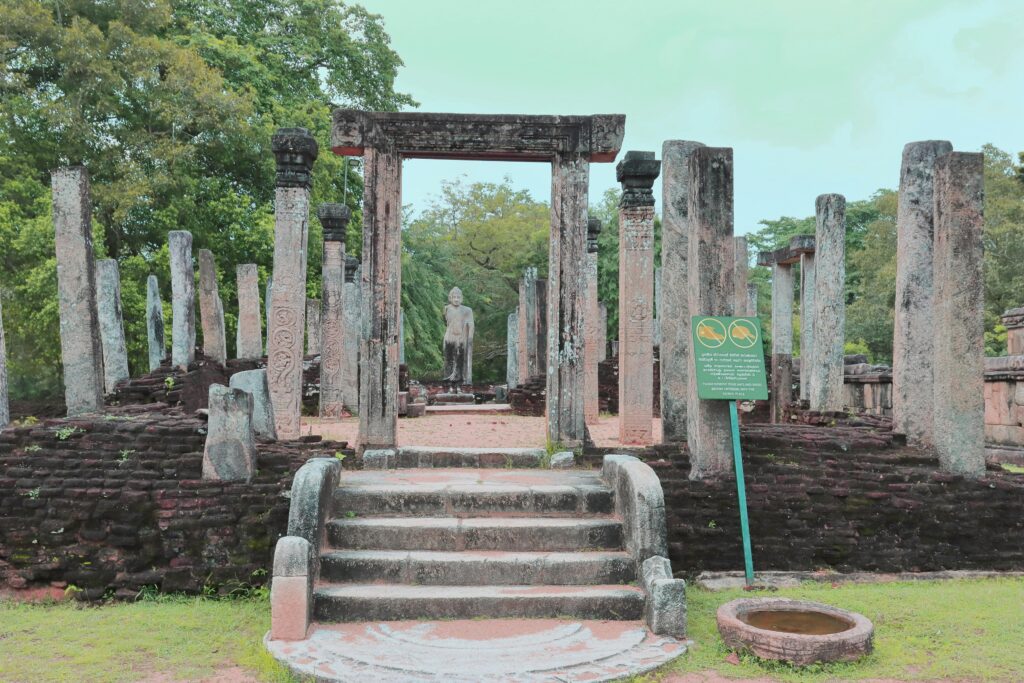
The ancient city of Polonnaruwa, a UNESCO World Heritage site, stands as a testament to the ingenuity, artistry, and spiritual depth of ancient Sri Lankan civilization. Serving as the second capital of Sri Lanka after the fall of Anuradhapura, Polonnaruwa rose to prominence between the 10th and 12th centuries AD and is renowned today for its well-preserved ruins, impressive stone sculptures, and advanced urban planning. The city offers a remarkable journey through time, allowing visitors to explore the grandeur of its royal complexes, religious monuments, and sophisticated irrigation systems that highlight the technological prowess of its ancient inhabitants.
At the heart of Polonnaruwa lies the Royal Palace complex, a sprawling site that once housed the majestic palace of King Parakramabahu I. The palace, known as Vijayabahu Maligaya, was an architectural marvel in its time, featuring multiple stories and extensive courtyards. Although only the ruins of its sturdy foundations and a few remaining walls stand today, the site still evokes a sense of the grandeur and opulence that characterized the ancient kingdom. Adjacent to the palace, the Council Chamber of Nissanka Malla is another notable structure, distinguished by its intricately carved stone pillars and the elaborate throne, which are testament to the aesthetic and architectural sophistication of the period.
One of the most iconic sites in Polonnaruwa is the Gal Vihara, a rock temple complex that houses some of the most exquisite Buddha statues in Sri Lanka. Carved directly out of a single granite rock face, the Gal Vihara features four statues of the Buddha in different postures: a massive 14-meter-long reclining Buddha, a standing Buddha over 7 meters tall, and two seated Buddhas. These statues are renowned for their serene expressions and fine craftsmanship, reflecting the zenith of ancient Sinhalese art and sculpture. The Gal Vihara is not just an artistic marvel but also a spiritual sanctuary, drawing pilgrims and visitors who come to admire the serene beauty and profound spiritual significance of these statues.
Culturally, Polonnaruwa was a melting pot of influences, reflecting the diverse interactions with traders, travelers, and monks from across Asia. This cultural amalgamation is evident in the architecture, art, and inscriptions found throughout the city. The ancient city’s ability to integrate various cultural and religious influences while maintaining a unique Sri Lankan identity is a testament to its historical and cultural significance.
Visiting Polonnaruwa today offers a unique glimpse into the past, providing a rich tapestry of historical, architectural, and spiritual experiences. The well-preserved ruins allow visitors to visualize the grandeur of the ancient city and appreciate the advanced skills of its builders and artisans. For travelers embarking on this journey from Colombo, several transport options are available to reach Polonnaruwa, ensuring a convenient and comfortable trip. The distance from Colombo to Polonnaruwa is approximately 232.4 kilometers, and the journey can be planned according to your preferences. The Sri Lankan government has made travel planning easier by providing online bus seat booking through https://sltb.eseat.lk, and train seat reservations can be made via https://eservices.railway.gov.lk. These convenient options ensure that your visit to Polonnaruwa is seamless and enjoyable, allowing you to fully immerse yourself in the historical and cultural wonders of this ancient city.
Gal Vihare – Rock Shrine
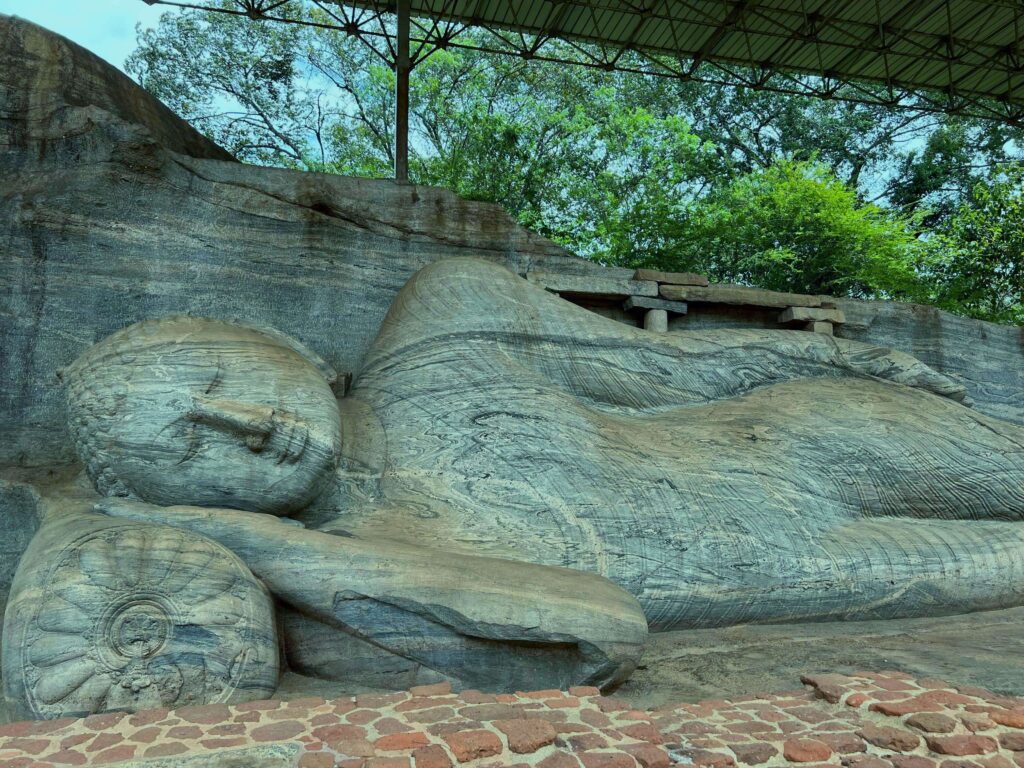
The Gal Vihare, also known as the Rock Shrine, is one of the most remarkable and revered sites within the ancient city of Polonnaruwa, a UNESCO World Heritage site in Sri Lanka. This stunning rock temple complex, carved from a single granite rock face, epitomizes the zenith of ancient Sinhalese art and religious devotion. Dating back to the 12th century during the reign of King Parakramabahu I, the Gal Vihare stands as a timeless testament to the skill, devotion, and spiritual depth of the craftsmen who created these awe-inspiring sculptures.
The Gal Vihare comprises four exquisite Buddha statues, each meticulously carved directly out of the granite cliff, reflecting different postures and states of the Buddha. These statues include a colossal reclining Buddha, a standing Buddha, and two seated Buddhas, each exuding a sense of serenity and spiritual tranquility. The most iconic of these is the 14-meter-long reclining Buddha, which represents the Buddha’s Parinirvana or final passing away. This statue’s serene expression and the detailed depiction of the robe’s folds showcase the high level of artistic achievement during this period.
The standing Buddha, which is over 7 meters tall, is another masterpiece of ancient sculpture. Unlike many other statues, this figure is depicted with crossed arms, a pose that some scholars interpret as a sign of meditation and reflection. The two seated Buddhas, both approximately 5 meters in height, are equally impressive, displaying the dhyana mudra (meditation pose) and symbolizing the Buddha’s deep meditative state.
The historical significance of the Gal Vihare extends beyond its artistic beauty. These statues were part of a larger monastic complex, which served as an important center for Theravada Buddhism. The Gal Vihare was originally known as Uttararama, meaning “Northern Monastery,” and it played a crucial role in the religious and monastic life of ancient Polonnaruwa. The site reflects the architectural and spiritual vision of King Parakramabahu I, who sought to revive and promote Buddhism in Sri Lanka during his reign.
Culturally, the Gal Vihare is a symbol of Sri Lanka’s rich heritage and the continuity of its Buddhist traditions. The site attracts pilgrims from all over the world who come to pay homage to these sacred statues. The Gal Vihare is not only a place of worship but also a cultural icon that represents the artistic and spiritual achievements of ancient Sri Lanka. The detailed craftsmanship and the serene beauty of the statues continue to inspire awe and reverence among visitors, reflecting the enduring legacy of the island’s Buddhist heritage.
Religiously, the Gal Vihare holds profound significance for Buddhists. The statues serve as a focal point for meditation, prayer, and reflection, offering a tranquil and sacred space for spiritual practice. The reclining Buddha, in particular, symbolizes the Buddha’s attainment of Nirvana, reminding devotees of the impermanence of life and the ultimate goal of enlightenment. The standing and seated Buddhas further emphasize themes of meditation, inner peace, and spiritual awakening, reinforcing the core teachings of Buddhism.
The spiritual ambiance of the Gal Vihare is further enhanced by the natural beauty of its surroundings. The serene environment, with lush greenery and the gentle rustle of leaves, creates a perfect setting for contemplation and reverence. Visitors often describe their experience at the Gal Vihare as deeply moving and spiritually enriching, as they connect with the profound sense of peace and tranquility that pervades the site.

